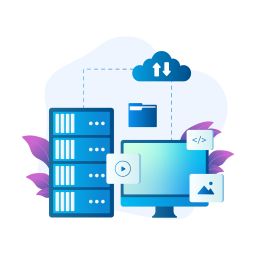
Best Practices for ColdBox and FuseBox in ColdFusion and Lucee Environments
ColdFusion and Lucee still power plenty of web apps out there — and choosing the right framework can make or break how easy it is to build, maintain, and scale them. Two names you’ll hear often are ColdBox and FuseBox. They both help organize CFML code but in very different ways.
Among CFML developers, ColdBox and FuseBox continue to stand out. Each has its strengths — ColdBox for its modern, modular design, and FuseBox for its enduring simplicity and clarity in legacy systems.
At Kadel Labs, we’ve worked across both worlds — helping organizations modernize their legacy FuseBox systems while architecting new, cloud-ready applications with ColdBox and Lucee. Drawing from that hands-on experience, here’s a guide to real-world best practices that actually make a difference.
Best Practices for ColdBox Framework
A CFML framework based on conventions, ColdBox was created with speed, modularity, and clarity in mind. ColdBox provides structure without adding extraneous elements to new ColdFusion or Lucee projects.
- Lean Into Conventions– ColdBox’s “convention over configuration” philosophy isn’t just marketing — it works. Stick to its folder structures and naming patterns for handlers, modules, and services. You’ll spend less time on setup and more time actually building.
- Think in Modules– Modular design isn’t optional anymore — it’s essential. Organize your application into logical modules that can be independently tested, expanded, or replaced. This strategy has aided teams at Kadel Labs in releasing updates more quickly and with fewer regressions.
- Use Dependency Injection Wisely– ColdBox’s built-in WireBox makes dependency management painless. It keeps your code loosely coupled, easier to mock, and easier to test. Clean architecture starts here.
- Embrace ORM — But Stay Pragmatic– ColdBox integrates Hibernate ORM beautifully. Use it for standard operations, but don’t be afraid to drop to SQL when you need performance control. Balance is key.
- Adopt Event-Driven Thinking– ColdBox’s event system lets you decouple logic cleanly. Trigger actions when something meaningful happens — logging, notifications, data syncs — without bloating your core code.
- Cache Smarter, Not Harder– CacheBox is powerful, but caching everything isn’t the answer. Cache only what improves response time without risking stale data. For distributed setups, Kadel Labs recommends pairing it with Redis or similar tools for reliability.
- Build with Testing in Mind– ColdBox works hand-in-hand with TestBox, making test-driven development realistic, not aspirational. Even simple tests for your modules can prevent late-stage headaches.
- Secure from Day One– Don’t wait till launch to think about security. ColdBox’s Security Interceptors help manage authentication, authorization, and session control out of the box. Set them up early and review them often.
- Keep Routes Clean and Predictable– Clear, RESTful routes make your APIs easier to maintain and debug. Use consistent naming and group related endpoints logically — future developers (and your API consumers) will thank you.
- Log What Actually Matters– LogBox is a robust framework, but logging shouldn’t become noise. Focus on actionable insights — exceptions, performance issues, and key business events. Integrate with Elastic Stack or Graylog for full visibility.
Best Practices for FuseBox Framework
Despite being an older framework, FuseBox is still used by many businesses to run critical applications. The goal is to maintain these systems’ stability and maintainability while progressively transferring them to more contemporary platforms like Lucee and ColdBox.
- Keep Circuits Well-Defined– Each circuit should have a clear, singular focus. Proper organization keeps legacy systems understandable even as teams change over time.
- Write Purposeful Fuse Actions– Each fuse action should do exactly one job — render a view, execute a query, handle a form. This makes debugging straightforward and helps maintain long-term consistency.
- Maintain a Clean fusebox.xml– The foundation of any FuseBox application is the fusebox.xml file. To make it easier for others to navigate, keep it neat, include comments, and document routing logic.
- Limit Global Variables– Global variables often lead to unpredictable bugs. Instead, pass parameters explicitly or use session scope where appropriate.
- Plan a Gradual Migration– For organizations still on FuseBox, Kadel Labs often recommends a phased migration to ColdBox or Lucee. Move one circuit at a time — no big-bang rewrite, no downtime.
- Add Custom Error Handling– Build circuit-level error handling that logs issues meaningfully. Old apps deserve good observability — it makes maintenance much smoother.
- Design for Reuse– FuseBox encourages reusable components, or “fuses.” Group common logic and functions so they can be reused across circuits instead of duplicated.
- Lock Down Security– Legacy doesn’t mean lax. Validate inputs, use CSRF tokens for forms, and secure circuits that handle sensitive data. Many breaches come from old code that never got modern safeguards.
- Monitor and Measure Performance– Tools like FusionReactor are invaluable for keeping legacy apps healthy. Track slow circuits, memory usage, and load times — small optimizations here go a long way.
- Map Out a Modernization Plan– FuseBox has served its purpose wel-l, but modernization is inevitable. Whether you’re adopting ColdBox or shifting to cloud-native Lucee environments, have a plan and timeline in place. Kadel Labs has helped multiple enterprises navigate this shift smoothly — one stable step at a time.
Conclusion
Both ColdBox and FuseBox have their place. ColdBox gives you modern development agility; FuseBox offers structure and dependability for legacy systems. We suggest applying best practices that make your application secure, testable, and ready for whatever comes next.
At Kadel Labs, we know how disciplined frameworks and smart modernization can transform development lifecycles. The key to success is striking a balance between stability and innovation, whether you’re carefully migrating from FuseBox or optimizing a ColdBox app. You’ll need the right technical partner to help you do this.
Since companies still use ColdFusion and Lucee to create scalable and reliable web applications, selecting the right framework is essential to long-term success.



